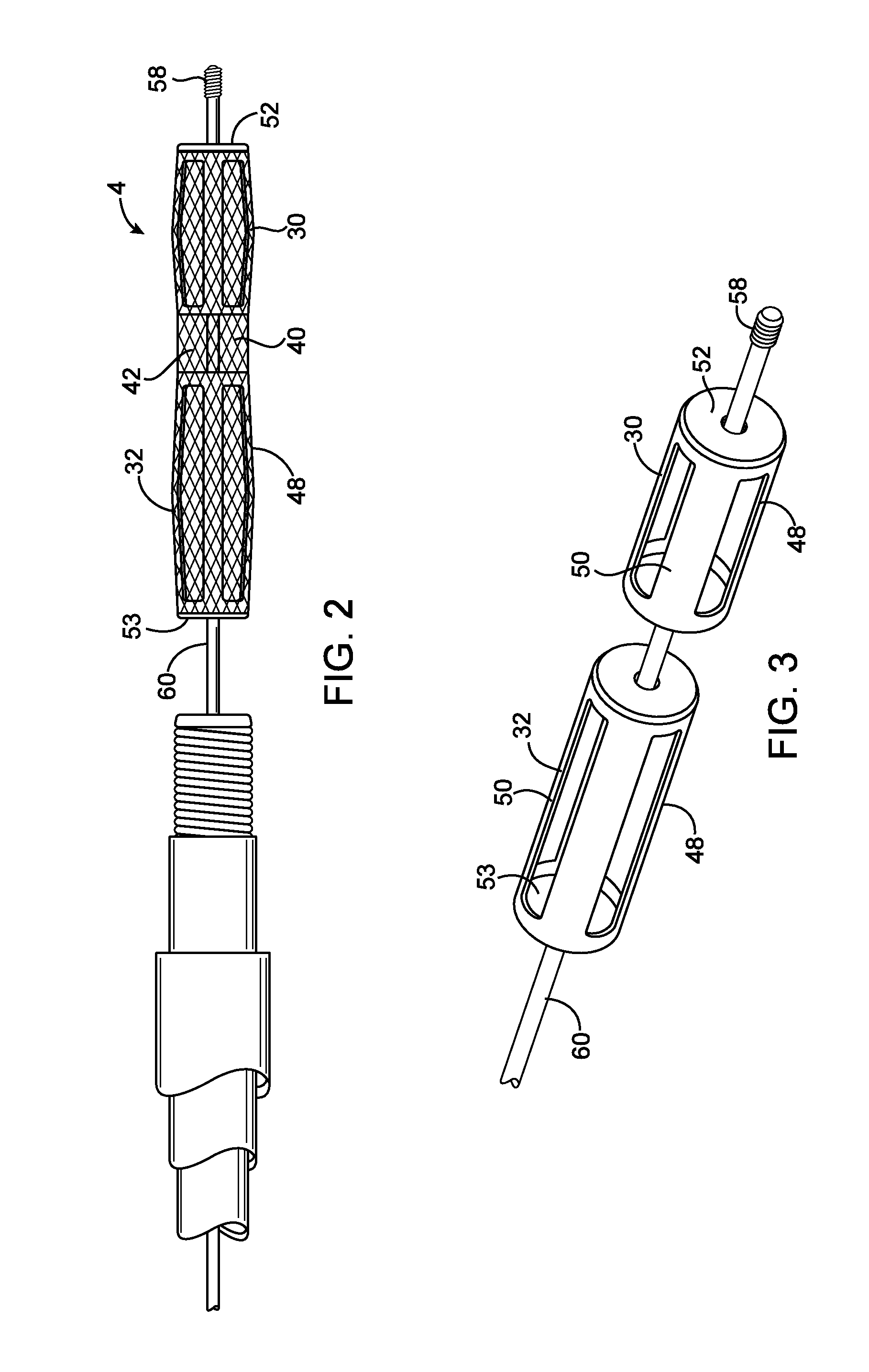Devices and methods for treating vascular malformations
a technology for vascular malformations and devices, applied in blood vessels, prostheses, catheters, etc., can solve the problems of reducing the treatment effect, and reducing the patient's treatment effect, so as to achieve faster or slower leakage
- Summary
- Abstract
- Description
- Claims
- Application Information
AI Technical Summary
Benefits of technology
Problems solved by technology
Method used
Image
Examples
Embodiment Construction
[0108]Referring to FIG. 1, a system 2 for introducing an expandable device 4 into a cerebral aneurysm is shown. A first catheter 6 extends through a penetration in the femoral artery and up to the carotid artery. A second catheter 8 is advanced through the first catheter 6 and into the cerebral vasculature to the site of the aneurysm or other abnormality. A delivery catheter 10 is then advanced through the second catheter 8. The catheter 10 delivers an expandable device 4 which partially fills the aneurysm as will be described below. The system 2 also has an energy supply 12 for heating the aneurysm to shrink the aneurysm as will be described below.
[0109]After the expandable device 4 has been delivered to the aneurysm and expanded, the aneurysm is reduced in size as shown in FIG. 6. The aneurysm may be shrunk partially toward the expandable device 4, into engagement with the expandable device 4, or may even be shrunk until the expandable device 4 is also reduced in size. An advantag...
PUM
| Property | Measurement | Unit |
|---|---|---|
| diameter | aaaaa | aaaaa |
| temperature | aaaaa | aaaaa |
| temperature | aaaaa | aaaaa |
Abstract
Description
Claims
Application Information
 Login to View More
Login to View More - R&D
- Intellectual Property
- Life Sciences
- Materials
- Tech Scout
- Unparalleled Data Quality
- Higher Quality Content
- 60% Fewer Hallucinations
Browse by: Latest US Patents, China's latest patents, Technical Efficacy Thesaurus, Application Domain, Technology Topic, Popular Technical Reports.
© 2025 PatSnap. All rights reserved.Legal|Privacy policy|Modern Slavery Act Transparency Statement|Sitemap|About US| Contact US: help@patsnap.com



